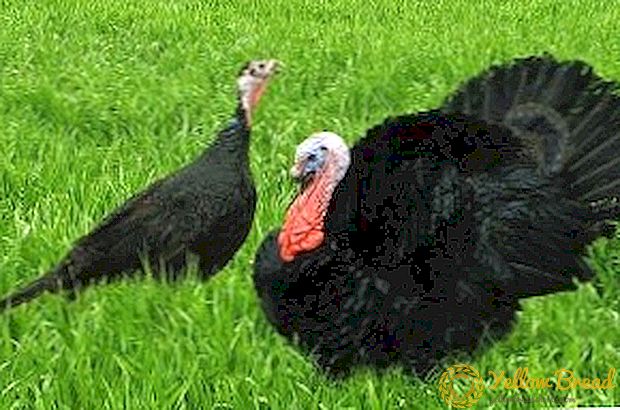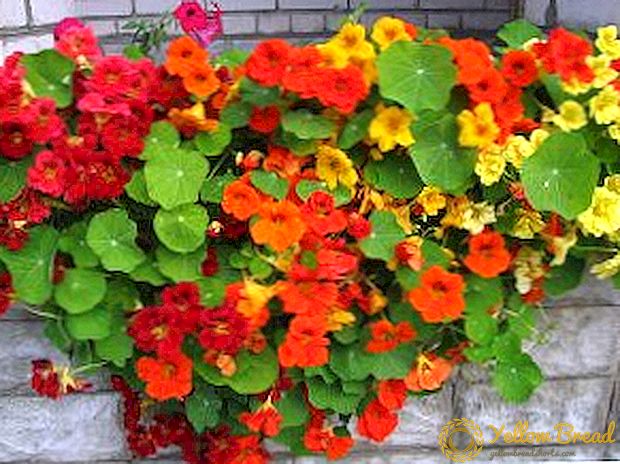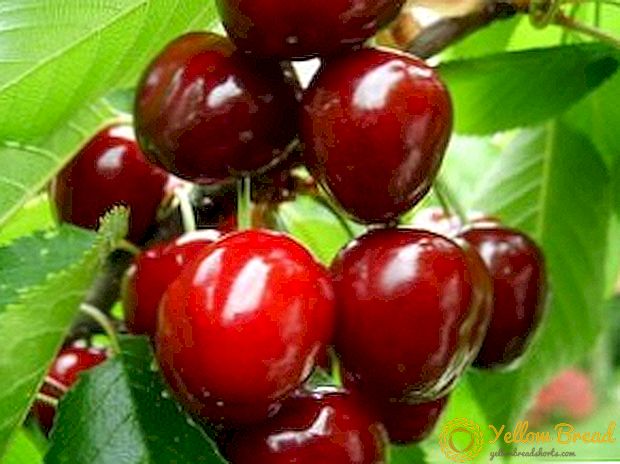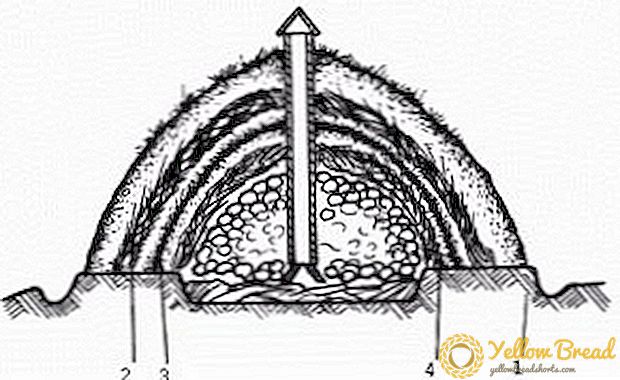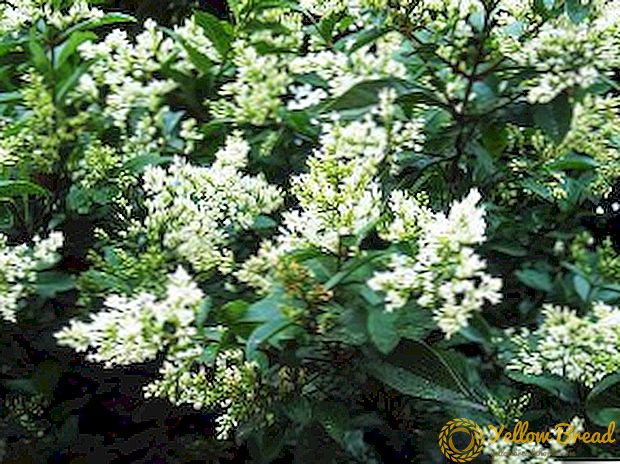
Cucumbers have long been very popular among the population of various regions. Probably only the lazy does not grow cucumbers in his summer cottage.
Only a few seeds planted in the ground, and you will provide your family with delicious, sweet, crispy cucumbers for the whole summer, and even for salting will remain!
The topic of today's article: feeding cucumber seedlings at home and in the garden. Answer the questions: how to feed cucumber seedlings on the window and in the greenhouse?
Characteristic of cucumber
Many consider the cucumber to be a useless vegetable, as there is a lot of water in it.
 Indeed, it contains 95-97 percent liquid, but it is not simple, but “living water”, it contains mineral salts of potassium, magnesium, calcium, phosphorus, iodine.
Indeed, it contains 95-97 percent liquid, but it is not simple, but “living water”, it contains mineral salts of potassium, magnesium, calcium, phosphorus, iodine.
These salts help the heart, liver and kidneys work. The liquid from cucumbers is a wonderful absorbent from nature, daily consumption of this vegetable will help get rid of toxins and slagging.
Cucumber - monoecious, cross-pollinated plant. Bees, bumblebees, flies pollinate its flowers. To increase the yield in the same greenhouse or garden need to plant several varieties.
There are also pertenocarpic (self-pollinating) varieties of cucumbers; these plants do not require the help of insects to set fruits.
Terms of ripening
In terms of ripening cucumbers are divided into early maturing (40-55 days from full germination to fruiting), mid-season (55-60 days) and late maturity (60-70 days and above) groups.
Requirements for growing cucumbers
Plants should be planted in the open ground only after the air has warmed up to plus 15-17 degrees, at a temperature of plus 15 degrees and below the growth of cucumbers slows down dramatically, and at plus 10 degrees it stops altogether.
 Best of all, cucumbers develop and grow at an air temperature of plus 25 to plus 30 degrees and a relative humidity of 70-80 percent.
Best of all, cucumbers develop and grow at an air temperature of plus 25 to plus 30 degrees and a relative humidity of 70-80 percent.
Soil requirements
You can grow cucumbers in any soil, but it is better to choose a fertile, heated, loose soil with neutral acidity. Cucumbers do not tolerate acidic soils, therefore pH should not be below 6.5.
Predecessors
Cucumbers will grow well on the onion, cabbage, tomato and potato garden beds. Cucumbers will not grow in the beds, where last year grew beets, pumpkins, zucchini or squash.
Growing methods
The most common method of growing cucumbers is use of greenhouses or other film covers. In a greenhouse, cucumbers grow best in the soil from a mixture of sod and humus. Primary requirements - plentiful watering with warm water, airing, feeding and loosening, but not deep, because the roots of cucumbers are located shallowly.
Cucumbers are often grown in the open field, but with a mandatory cover by foil or other covering material to protect the crops from possible cold weather.
Watering
To get a good harvest of delicious cucumbers, we should not forget about watering. At first, after transplanting, it cannot be watered a lot, so that the roots do not start to rot. Water for irrigation must be warm (22-25 degrees).
The lack of moisture immediately affects the taste of vegetables - cucumbers become bitter. To get a rich harvest, it is very important to combine irrigation with additional dressings, to fertilize the earth with various fertilizers.
Fertilizers and fertilizers
 Top dressing is a very crucial moment for plants, because gardeners unknowingly can use not the fertilizer that is necessary for this plant and instead of pickling sturdily get cucumbers in the form of a barrel or crooked comma.
Top dressing is a very crucial moment for plants, because gardeners unknowingly can use not the fertilizer that is necessary for this plant and instead of pickling sturdily get cucumbers in the form of a barrel or crooked comma.
Until the cucumbers are planted, no need to fertilize the soil, as a surplus of mineral salts is harmful to plants. When preparing a cucumber bed you can make only rotted manure.
What is fed cucumber seedlings?
Cucumbers love organic and mineral dressingsBut chemical fertilizers harm this vegetable. Over the entire period of fruiting should be a few feedings. Feedings are root (applied to the soil) and foliar (spraying method).
The first feeding of cucumber seedlings is carried out by nitrogen-containing or mineral fertilizer. 15 days after disembarkation. You can fertilize the soil with organic nitrogen-containing fertilizer (mullein, diluted with water 8-10 times, or chicken manure, diluted 15 times).
The second dressing need to make 10-15 days after the first, when cucumbers start to bloom. It can be a mixture of 20 grams of potassium nitrate, 30 grams of ammonium nitrate and 40 grams of superphosphate.
This mixture is designed for a ten-liter bucket. If you have only superphosphate at hand, you can dilute it in water (2 tablespoons per 10 liters) and pour cucumbers on it.
 Top dressings of this kind are good in dry warm weather, in rainy weather dry dressings are recommendedFor example, dusting the ashes of a cucumber bed at the rate of 1 cup of ash per 1 square meter of area.
Top dressings of this kind are good in dry warm weather, in rainy weather dry dressings are recommendedFor example, dusting the ashes of a cucumber bed at the rate of 1 cup of ash per 1 square meter of area.
The following feeding should be carried out with an interval of 7-10 days. During fruiting cucumbers require potassium and phosphorus, as well as nitrogen with sulfur components. To determine exactly which element your cucumbers lack, it is enough to look at their shape.
How to feed cucumber seedlings to be plump? With a lack of potassium, the yield decreases, the presentation of vegetables is lost,they take the ugly shape of a jug with a thin base. If there is not enough nitrogen in the soil, the cucumber is thickened at the stem and thin to the tip. With a shortage of calcium in the land of cucumbers, the flowers dry and the ovaries die, immunity goes down, the plants start to ache.
To saturate the soil with calcium, into it can make crushed eggshells. Mineral fertilizers in the period of fruiting alternate feeding from urea (50 grams per 10 liters of water) and potassium nitrate (2 tablespoons per 10 liters of water).
How to feed cucumber seedlings at home? Recently, a great popularity has received plant nutrition yeast or bread sourdough, this method is successfully used by many gardeners. Root top dressing of vegetables must be combined with foliar, that is, with the treatment of plants with fertilizer solution.
Foliar fertilization of cucumbers with fertilizers containing nitrogen, rejuvenates plants, prevents yellowing of leaves, improves metabolism and photosynthesis.
With a small number of ovaries well honey supplement helps. For this, 2 tablespoons of honey are dissolved in 1 liter of water. Plants sprayed with this solution attract bees, their number of ovaries increases, and their yield increases.
 With proper care, processing and preventive measures, as well as home fertilizer for cucumber seedlings, cucumbers on the table will delight you all season.
With proper care, processing and preventive measures, as well as home fertilizer for cucumber seedlings, cucumbers on the table will delight you all season.
We hope that our advice and recommendations will help you grow a rich harvest of vegetables!
Useful materials
Check out other helpful cucumber seedlings articles:
- How to grow on the windowsill, balcony and even in the basement?
- Tips for growing in various containers, particularly in peat pots and tablets.
- Find out the planting dates depending on the region.
- The reasons why seedlings are pulled out and what diseases are affected?
- All the secrets of seed preparation before planting and picking young shoots.

